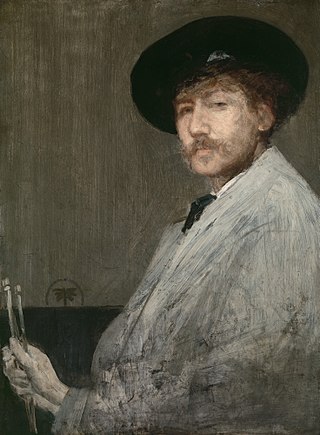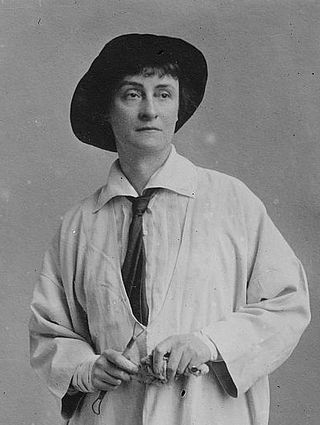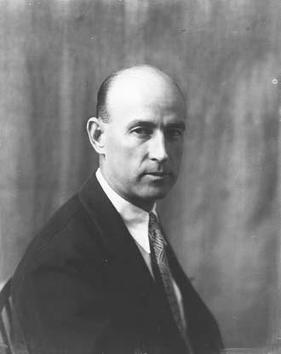
James Abbott McNeill Whistler was an American painter in oils and watercolor, and printmaker, active during the American Gilded Age and based primarily in the United Kingdom. He eschewed sentimentality and moral allusion in painting and was a leading proponent of the credo "art for art's sake".

David Roberts was a Scottish painter. He is especially known for The Holy Land, Syria, Idumea, Arabia, Egypt, and Nubia, a prolific series of detailed lithograph prints of Egypt and the Near East that he produced from sketches he made during long tours of the region (1838–1840). These and his large oil paintings of similar subjects made him a prominent Orientalist painter. He was elected as a Royal Academician in 1841.

The Hunterian is a complex of museums located in and operated by the University of Glasgow in Glasgow, Scotland. It is the oldest museum in Scotland. It covers the Hunterian Museum, the Hunterian Art Gallery, the Mackintosh House, the Zoology Museum and the Anatomy Museum, which are all located in various buildings on the main campus of the university in the west end of Glasgow.
Events from the year 1877 in art.

Philip James de Loutherbourg, whose name is sometimes given in the French form of Philippe-Jacques, the German form of Philipp Jakob, or with the English-language epithet of the Younger, was a French-born British painter who became known for his large naval works, his elaborate set designs for London theatres, and his invention of a mechanical theatre called the "Eidophusikon". He also had an interest in faith-healing and the occult, and was a companion of the confidence-trickster Alessandro Cagliostro.

Japonisme is a French term that refers to the popularity and influence of Japanese art and design among a number of Western European artists in the nineteenth century following the forced reopening of foreign trade with Japan in 1858. Japonisme was first described by French art critic and collector Philippe Burty in 1872.

Rudolph Carl Gorman was a Native American artist of the Navajo Nation. Referred to as "the Picasso of American Indian artists" by The New York Times, his paintings are primarily of Native American women and characterized by fluid forms and vibrant colors, though he also worked in sculpture, ceramics, and stone lithography. He was also an avid lover of cuisine, authoring four cookbooks, called Nudes and Food.

Robert Walter Weir was an American artist and educator and is considered a painter of the Hudson River School. Weir was elected to the National Academy of Design in 1829 and was an instructor at the United States Military Academy. His best-known work is Embarkation of the Pilgrims in the United States Capitol rotunda in Washington, D.C. More than 450 of his works are known, and he created many unsigned paintings that may never be attributed to him.

Joseph Pennell was an American draftsman, etcher, lithographer, and illustrator for books and magazines. A prolific artist, he spent most of his working life in Europe, and developed an interest in landmarks, landscapes, and industrial scenes around the world. A student of James Lambdin and Thomas Eakins, he was later influenced by James McNeill Whistler. He was married to author Elizabeth Robins, and he also was a writer.

Janet Scudder, born Netta Deweze Frazee Scudder, was an American sculptor and painter from Terre Haute, Indiana, who is best known for her memorial sculptures, bas-relief portraiture, and portrait medallions, as well as her garden sculptures and fountains. Her first major commission was the design for the seal of the New York Bar Association around 1896. Scudder's Frog Fountain (1901) led to the series of sculptures and fountains for which she is best known. Later commissions included a Congressional Gold Medal honoring Domício da Gama and a commemorative medal for Indiana's centennial in 1916. Scudder also displayed her work at numerous national and international exhibitions in the United States and in Europe from the late 1890s to the late 1930s. Scudder's autobiography, Modeling My Life, was published in 1925.

Paul Durand-Ruel was a French art dealer associated with the Impressionists and the Barbizon School. Being the first to support artists such as Claude Monet, Camille Pissarro, and Pierre-Auguste Renoir, he is known for his innovations in modernizing art markets, and is generally considered to be the most important art dealer of the 19th century. An ambitious entrepreneur, Durand-Ruel cultivated international interest in French artists by establishing art galleries and exhibitions in London, New York, Berlin, Brussels, among other places. Additionally, he played a role in the decentralization of art markets in France, which prior to the mid-19th century was monopolized by the Salon system.

Hill–Stead Museum is a Colonial Revival house and art museum set on a large estate at 35 Mountain Road in Farmington, Connecticut. It is best known for its French Impressionist masterpieces, architecture, and stately grounds. The property was designated a National Historic Landmark as a nationally significant example of Colonial Revival architecture, built in 1901 to designs that were the result of a unique collaboration between Theodate Pope Riddle, one of the United States' first female architects, and the renowned firm of McKim, Mead & White. The house was built for Riddle's father, Alfred Atmore Pope, and the art collection it houses was collected by Pope and Riddle.

Aldro Thompson Hibbard was an American plein air painter known for his depictions of snowy landscapes, particularly of Vermont. Hibbard worked in oil, as watercolor couldn't be used in January and February in the mountains of Vermont. He lived most of his life in Rockport, Massachusetts.

Thomas Robert Way was an English painter of landscapes and portraits, lithographer and printer, who exhibited in London between 1883 and 1893.

Little Thakeham is an Arts and Crafts style, Grade I listed private house in the parish of Thakeham, near the village of Storrington, in the Horsham district of West Sussex, England. Designed by architect Edwin Lutyens in 1902, the house was one of the first in which Lutyens mixed neoclassical architecture into his previously vernacular style. The exterior of the house is vernacular, but the interior has classical features, particularly in its large hall. The gardens, also designed by Lutyens, are Grade II* listed in the National Register of Historic Parks and Gardens.

Mother of Pearl and Silver: The Andalusian is a painting by James McNeill Whistler. The work shows a woman in full figure standing with her back to the viewer, with her head in profile. The model is Ethel Whibley, the artist's secretary and sister-in-law.
Martha P. Tedeschi is an American art historian and curator. Tedeschi currently serves as the Elizabeth and John Moors Cabot Director of the Harvard Art Museums. She is a scholar of nineteenth-century American and British prints and drawings, especially works by artists such as Winslow Homer, John Marin, and James McNeill Whistler.
Reika Iwami (岩見 禮花 Iwami Reika, was a Sōsaku-hanga woodblock printmaker who worked primarily with abstract compositions.

Thomas William Marshall was an English post-impressionist painter and water colorist, born on October 17, 1875 at Donisthorpe in England. He died on September 2, 1914 in Paris.
Rachel Frances Alexander was a social campaigner in Kensington, London. She was involved in the foundation of several charities in the borough including, the Kensington Housing Trust, the Kensington Council of Social Service and the North Kensington Community Centre. Her father William Cleverly Alexander was an early supporter of the painter James McNeill Whistler, who painted two of her elder sisters. Rachel herself was painted by the artist William Nicholson and she and her younger sister Jean donated seventeen paintings from their father's art collection to the National Gallery and pieces of his Japanese collection to the Victoria and Albert.















